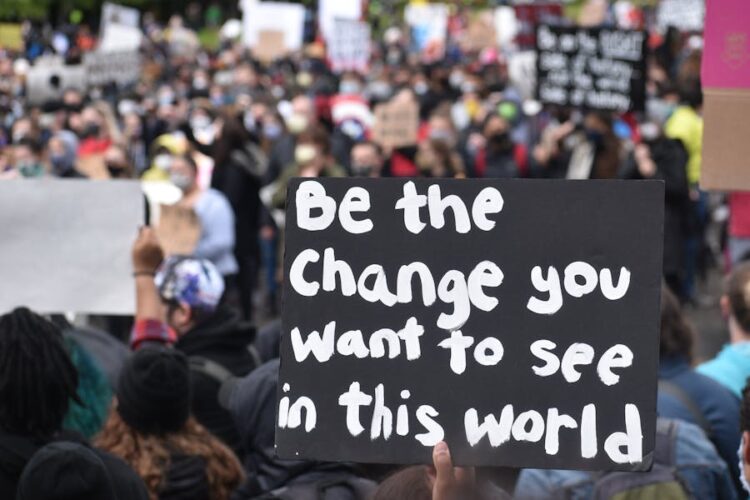Explore the concept of civil rights and the importance of addressing discrimination. Learn about the steps you can take if you believe you have been discriminated against, empowering you to advocate for your rights and seek justice.
Civil rights are the fundamental rights and freedoms guaranteed to all individuals by law, regardless of their race, ethnicity, gender, religion, disability, or other characteristics. These rights are essential for ensuring equality, dignity, and fair treatment for all members of society.
However, discrimination continues to be a pervasive issue in various aspects of life, including employment, housing, education, and public accommodations. If you believe you have been discriminated against, it is essential to understand your rights and take appropriate action to address the injustice. In this comprehensive guide, we will delve into the concept of civil rights, examine different forms of discrimination, and outline the steps you can take if you find yourself in a situation where your rights have been violated.
Understanding Civil Rights:
Civil rights encompass a broad range of rights and freedoms that are protected by law to ensure equality and fairness for all individuals. These rights are enshrined in various legal documents, including the United States Constitution, the Civil Rights Act of 1964, the Americans with Disabilities Act (ADA), and other federal and state laws.
A Glance into The History:
The history of civil rights is a complex tapestry woven with the struggles and triumphs of marginalized communities striving for equality and justice. It spans millennia and encompasses diverse movements, each addressing specific forms of discrimination and oppression. One of the earliest recorded instances of advocacy for civil rights dates back to ancient civilizations, where philosophers and lawmakers debated principles of equality and justice.
However, the modern civil rights movement gained momentum in the 19th and 20th centuries, driven by the abolitionist movement to end slavery and the fight for women’s suffrage.These movements laid the groundwork for subsequent struggles, such as the African-American civil rights movement of the mid-20th century, which sought to dismantle segregation and secure equal rights under the law. Led by visionaries like Martin Luther King Jr., Rosa Parks, and Malcolm X, this movement achieved significant victories with landmark legislation such as the Civil Rights Act of 1964 and the Voting Rights Act of 1965, which outlawed segregation and discriminatory voting practices. Similarly, the LGBTQ+ rights movement emerged in the latter half of the 20th century, advocating for equal rights and protections for individuals regardless of sexual orientation or gender identity.
The disability rights movement also gained momentum during this time, pushing for accessibility, accommodation, and inclusion for people with disabilities. These movements, along with others advocating for indigenous rights, immigrant rights, and religious freedom, have collectively shaped the landscape of civil rights, challenging systemic injustices and advancing the cause of equality for all.
While significant progress has been made, the struggle for civil rights continues in the face of persistent inequalities, discrimination, and systemic barriers. It serves as a reminder of the ongoing importance of vigilance, activism, and solidarity in the pursuit of a more just and equitable society for future generations.
When an individual’s civil rights are violated, they have legal recourse to seek justice and remedy the harm inflicted upon them. One primary avenue for recourse is to file a complaint with relevant government agencies tasked with enforcing civil rights laws. For instance, if the violation occurs in the workplace, the Equal Employment Opportunity Commission (EEOC) handles complaints related to employment discrimination based on race, color, religion, sex, national origin, age, disability, or genetic information. Similarly, the Department of Housing and Urban Development (HUD) oversees complaints of housing discrimination, while the Department of Education (DOE) addresses discrimination in educational settings. These agencies investigate complaints, gather evidence, and may take administrative action against violators, such as issuing fines or requiring corrective measures. Additionally, individuals can pursue legal action by seeking representation from an experienced Civil Litigation Lawyer.
Some key civil rights include:
Right to Equal Treatment:
All individuals are entitled to equal treatment under the law and should not be discriminated against based on their race, color, religion, sex, national origin, age, disability, or other protected characteristics.
Right to Freedom of Speech and Expression:
Individuals have the right to express their opinions and beliefs freely, without fear of censorship or retaliation.
Right to Freedom of Religion:
Individuals have the right to practice their religion or belief system freely, without interference or discrimination.
Right to Equal Opportunity:
All individuals should have equal access to education, employment, housing, and public accommodations, regardless of their background or circumstances.
Forms of Discrimination:
Discrimination can take many forms and can occur in various contexts, including:
Employment Discrimination:
This occurs when an employer treats an employee or job applicant unfavorably because of their race, color, religion, sex, national origin, age, disability, or other protected characteristics. Examples include hiring or promotion decisions based on discriminatory criteria, unequal pay practices, and harassment in the workplace.
Housing Discrimination:
This occurs when landlords, property managers, or real estate agents discriminate against individuals seeking housing based on their race, color, religion, sex, national origin, familial status, disability, or other protected characteristics. Examples include refusing to rent or sell housing, imposing different rental terms or conditions, and harassment or intimidation based on discriminatory motives.
Educational Discrimination:
This occurs when educational institutions discriminate against students or employees based on their race, color, religion, sex, national origin, age, disability, or other protected characteristics. Examples include unequal treatment of students, discriminatory discipline practices, and harassment or bullying based on discriminatory motives.
Public Accommodation Discrimination:
This occurs when businesses or organizations discriminate against individuals seeking goods, services, or facilities based on their race, color, religion, sex, national origin, age, disability, or other protected characteristics. Examples include denying access to facilities or services, imposing discriminatory terms or conditions, and harassment or intimidation based on discriminatory motives.
Steps to Take if You Feel Discriminated Against:
If you believe you have been discriminated against, it is essential to take action to address the situation and protect your rights. Here are the steps you can take:
Document the Incident:
Keep detailed records of the discriminatory incident, including dates, times, locations, and names of individuals involved. Document any witnesses to the incident and gather any relevant evidence, such as emails, letters, or other communications.
Report the Discrimination:
If the discrimination occurred in the workplace, housing, education, or public accommodation setting, report the incident to the appropriate authority or governing body. This may include your employer, housing provider, school or university, or the relevant government agency responsible for enforcing civil rights laws.
Seek Legal Advice:
Consider consulting with an attorney who specializes in civil rights or discrimination law to discuss your rights and options. An attorney can provide guidance on the best course of action and help you navigate the legal process.
File a Complaint:
If informal attempts to resolve the issue are unsuccessful, consider filing a formal complaint with the appropriate government agency or regulatory body. This may involve submitting a complaint to the Equal Employment Opportunity Commission (EEOC), the Department of Housing and Urban Development (HUD), the Department of Education (DOE), or other relevant agencies.
Explore Alternative Dispute Resolution:
In some cases, mediation or arbitration may be an option for resolving discrimination disputes outside of the court system. These alternative dispute resolution methods can be less formal and more collaborative than traditional litigation, and may result in a faster resolution to the issue.
Consider Legal Action:
If efforts to resolve the issue through informal means or alternative dispute resolution are unsuccessful, you may choose to pursue legal action through the court system. This may involve filing a lawsuit against the individual or entity responsible for the discrimination, seeking damages, and obtaining a court order to stop the discriminatory behavior.
Conclusion:
When faced with a violation of their civil rights, individuals have several legal avenues to pursue justice and seek remedies for the harm inflicted upon them. Whether through filing a complaint with government agencies such as the EEOC, HUD, or DOE, or by seeking legal representation and initiating a lawsuit in civil court, individuals can hold violators accountable and assert their rights under the law. These legal actions serve as vital mechanisms for addressing systemic discrimination, promoting accountability, and fostering a more just and equitable society for all.
Moreover, alternative dispute resolution methods such as mediation or arbitration offer flexible and collaborative approaches to resolving civil rights disputes, complementing traditional litigation.
In addition to seeking legal recourse, it is crucial for individuals to recognize the broader significance of their actions in addressing systemic discrimination and promoting social change. By speaking out against civil rights violations and advocating for justice, individuals not only seek redress for themselves but also contribute to the larger struggle for equality and human rights. Through their efforts, they raise awareness, challenge discriminatory practices, and hold institutions accountable for upholding civil rights protections. Furthermore, the outcomes of individual legal actions can set precedents, establish legal standards, and shape future policies and practices, impacting the lives of countless others who may face similar forms of discrimination. The pursuit of legal action in response to civil rights violations is not only a matter of personal justice but also a powerful means of advancing collective progress towards a more inclusive, equitable, and just society. It underscores the enduring importance of vigilance, activism, and solidarity in safeguarding civil rights and upholding the principles of equality and justice for all.










